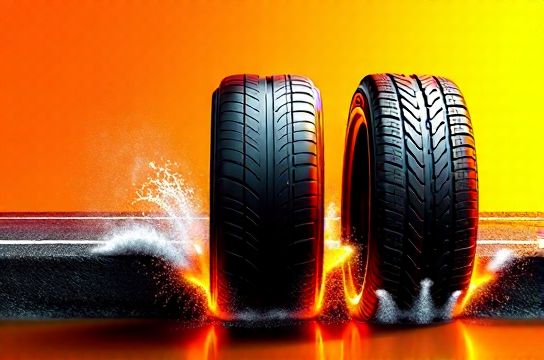Tire Grip
- 时间:
- 浏览:21
- 来源:OrientDeck
When it comes to driving performance, safety, and overall vehicle control, few things matter more than tire grip. Whether you're carving corners on a mountain road or braking hard in the rain, your tires are the only point of contact between your car and the road. So, how do you maximize tire grip? Let’s dive into the science, the secrets, and the real-world tips that can transform your ride.

First off, what exactly is tire grip? Simply put, it's the friction between your tires and the road surface. This grip determines how well your car accelerates, handles, and stops. But here’s the kicker — not all grip is created equal. Temperature, tread design, rubber compound, and even inflation pressure play massive roles.
Let’s break it down with some real data. Below is a comparison of different tire types under varying conditions:
| Tire Type | Dry Grip (0-60 mph) | Wet Braking (60-0 mph) | Tread Life (miles) | Optimal Temp Range (°F) |
|---|---|---|---|---|
| Sport Summer | 3.8 sec | 148 ft | 30,000 | 50–100 |
| All-Season | 4.2 sec | 165 ft | 50,000 | 32–95 |
| Performance All-Weather | 4.0 sec | 152 ft | 40,000 | 0–100 |
| Winter | 4.8 sec | 175 ft | 25,000 | -20–32 |
As you can see, sport summer tires offer the best dry grip but fall apart in cold weather. Winter tires, while sluggish on warm pavement, shine when temps drop below freezing. The sweet spot for most drivers? Performance all-weather tires — they balance grip, longevity, and versatility.
Now, let’s talk about temperature. Tire grip peaks within a specific temperature window. For example, high-performance rubber starts losing stickiness below 40°F. That’s why track drivers do warm-up laps — cold tires = zero grip.
Another game-changer? Tire pressure. Under-inflated tires increase rolling resistance and reduce cornering stability. Over-inflated ones decrease contact patch, leading to less grip and a harsher ride. The ideal pressure? Check your door jamb sticker — not the tire sidewall!
And don’t forget alignment. Misaligned wheels cause uneven wear and reduce effective grip. A simple alignment check every 6,000 miles can save you thousands in premature tire replacement.
In short, maximizing tire grip isn’t just about buying expensive rubber. It’s about understanding the conditions, maintaining proper pressure, choosing the right compound, and respecting the limits. Your tires work harder than any other part of your car — treat them right, and they’ll keep you safe, fast, and in control.